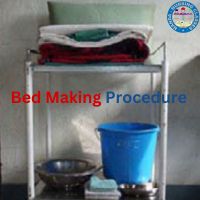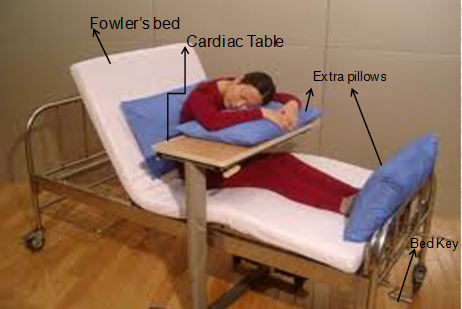Pregnancy is an extraordinary time in a woman’s life, full of excitement and anticipation as a new chapter begins. This journey, while joyous, also brings about significant changes and challenges for the expectant mother. Ensuring the health and well-being of both the mother and the developing baby is paramount during these nine months. One of the key ways to achieve this is through regular antenatal physical examinations.
Antenatal physical examinations are thorough check-ups performed by healthcare providers throughout pregnancy. These visits are designed to monitor the progress of the pregnancy, assess the health of the mother and baby, and detect any potential complications early on. During these examinations, vital signs are checked, the baby’s growth is measured, and various tests are conducted to ensure everything is on track.
The importance of these regular check-ups cannot be overstated. They help identify any issues that may arise, such as gestational diabetes, preeclampsia, or growth restrictions, allowing for timely interventions that can prevent more serious problems down the line. Additionally, antenatal visits provide an invaluable opportunity for expectant mothers to ask questions, express concerns, and receive advice on everything from nutrition to childbirth preparation.

Antenatal care is the systemic examination & advices given to the pregnant women at regular & periodic intervals based on the individual needs starting from the beginning of pregnancy till delivery. Antenatal examination is carried out whenever visit the clinical the clinical for antenatal check up. Antenatal physical examination is a crucial part of prenatal care, aiming to assess the health and well-being of both the mother and the fetus.
Definition
Antenatal care refers to the care given to the expectant mother from the time the conception is confirmed until the beginning of labour.
Purposes of Antenatal Examination
- To screen the high risk cases
- To prevent or to detect and treat at the earliest any complications.
- To ensure continued medical surveillance and prophylaxis.
- To educate the mother about the physiology of pregnancy and labor by demonstrations, charts and diagrams , so that fear can be removed and psychology is improved.
- To discuss with the couple about the place, time, and mode of delivery.
- To motivate the couple about to the need of family planning and also appropriate advice to couple seeking medical termination of pregnancy
- The objective is to ensure a normal pregnancy with delivery of a healthy baby from a healthy mother.
Importance of Antenatal Physical Examination
An antenatal physical examination is essential for:
- Monitoring the health and well-being of the mother and fetus
- Identifying potential complications or concerns early on
- Providing personalized guidance and advice to the mother
- Facilitating early intervention and treatment if necessary
- Remember, antenatal physical examination is an essential part of prenatal care, and it is crucial to follow the recommended guidelines and protocols to ensure the best possible outcomes for both the mother and the fetus.
Frequency of visits to the antenatal clinic
The four-visit ANC model outlined in WHO clinical guidelines
First Visit
8-12 weeks Confirm a pregnancy and EDD and classify women for basic ANC(four visits)or more specialized care. Screen, treat, and give preventive measures. Develop a birth and emergency plan. Advise and counsel.
Second visit
24-26 weeks Assess maternal and fetal well-being. Exclude PIH and anemia. Give preventive measures. Review and modify birth and emergency plan. Advise and counsel.
Third visit
32 weeks Assess maternal and fetal well-being. Exclude PIH, anemia, multiple pregnancies. Give preventive measures. Review and modify birth and emergency plan. Advise and counsel.
Fourth visit
36-38 weeks Assess maternal and fetal well-being. Exclude PIH, anemia, multiple pregnancy, mal presentation. Give preventive measures. Review and modify birth and emergency plan. Advice and counsel.
Antenatal Physical Examination Procedure at the first visit
When a woman comes to the health facility health care worker (ASHA, ANM, CHO, Staff Nurse, Doctor, Gynecologist) assess the health status of the mother and fetus, screen out the risk pregnancy, and formulate a plan of subsequent management, they also obtain baseline information against which the subsequent changes are assessed and which are of importance in the determination of the gestational age. let’s learn about first-time visit antenatal women’s checkups
Articles Used in Antenatal Examination
The articles used in antenatal examination depend on which examination you want to check and where you are performing the examination like community, home visit or hospital setup, by the way, articles used in antenatal examination are
|
S.No |
Articles |
Rational |
|---|---|---|
| 1. |
Data entry register |
To record data |
|
2. |
Furniture (Floor Sheet or Stool or chair or Examination Table) |
To provide comfortable position |
|
3. |
Pregnancy Kit (HCG Testing Kit) |
To confirm Pregnency |
|
4. |
Weight machine |
To check Weight |
|
5. |
Inch tape or stadiometer |
To measure height |
| 6. |
Spegnomanometer and Stethoscope |
To check Blodd Pressure |
| 7. |
Hemoglobinometer |
To check Hb level |
| 8. |
Glucometer |
To check glucose level |
|
9. |
Urine Testing Strips |
To check UTI |
| 10. |
Blood investigation Kit ( HIV, Vidal, HbsAg, Syphilis, Malaria ) |
To check infection |
| 11. |
300 ml water container, with spoon and glass |
For diluting glucose |
| 12. |
75 gm Glucose box or pouch |
To do OGTT |
| 13. |
Tetanus Toxoid Immunization Vile |
For immunity |
| 14. |
Injection syringe |
For vaccination |
| 15. |
Cotton , spirit and Gloves |
To prevent infection |
| 16. |
Folic acid table, Iron Tablet or Calcium tablet |
For wellbeing |
| 17. |
Kidney tray, Paper bag |
To collect waste material |
Procedure of Antenatal Assessment | Antenatal Assessment Procedure | Antenatal Physical Examination Procedure | Antenatal Examination Procedure
The antenatal assessment procedure performed in Ayushman Arogya Kendra (HWC) level
|
S.No . |
Procedure |
Rational |
|---|---|---|
|
1. |
Introduce ourselves and explain the procedure to women and family members. |
To make confidence and comfort |
|
2. |
Confirm the Pregnancy by HCG test |
To confirm Pregnancy |
|
3. |
Ask last menstrual cycle’s first day (LMP) |
For making baseline data (calculate EDD) |
|
4. |
Do head to toe Physical examination and Vitals |
To detect any abnormality |
|
5. |
Take the weight of women |
For BMI |
|
6. |
Take Hight of women |
For BMI |
|
7. |
Take the Blood pressure of women |
For making baseline data and for detecting PIH |
|
8. |
Check Hemoglobin level by Hb test Hemoglobin Test |
To detect anemia |
|
9. |
Check Random blood sugar level |
To detect blood sugar level |
|
10. |
Do Oral Glucose Tolerance test (OGTT) |
To measure the body’s ability to process glucose |
|
11. |
Do Urine examination |
To detect urinary tract infections |
|
12. |
Do VIDAL Test |
To detect Salmonella antibodies |
|
13. |
Do HbsAg Test |
To detect Hepatitis B |
|
14. |
Do HIV Test |
To detect Human Immunodeficiency Virus |
|
15. |
Do Syphilis Test |
To detect Syphilis infection |
|
16. |
Do vaccination Tetnus Toxide (TT) |
For immunity to the fetus |
|
17. |
Provide medication (Folic acid tablet till 3 months from LMP, after 3 months from LMP provide IFA and Calcium Tablets with Vitamin B12 supplement.) |
For Growth and development |
|
18. |
Record every data of pregnant women |
For making baseline data |
|
19. |
Provide health education |
For the well-being of the fetus and women |
|
20. |
Consult for the next visit for a checkup |
For the well-being of the fetus and women |
This is the first time the antenatal physical examination has been performed by the Community Health Officer at the Health and Wellness Center (HWC) now a day their name is “‘
/” in India. If we talk about other county antenatal physical examinations it may be in a different sequence but this is the systematic antenatal physical examination followed in India.
Health Teaching During Pregnancy
Health promotion during pregnancy begins with Reviewing aspects such as
⦁ Antenatal check-ups
⦁ Antenatal Diet
⦁ Antenatal Counseling
⦁ Antenatal Exercise
⦁ Weight gain
⦁ Antenatal Hygiene
⦁ Rest and sleep
⦁ Bowel Care
⦁ Care of breast
⦁ Clothing, shoes and belt
⦁ Dental Care
⦁ Coitus
⦁ Travel
⦁ Smoking and alcohol
⦁ Immunization
⦁ Contraceptive advice
⦁ Well- baby care
Conclusion
A woman’s health prior to conception and during her pregnancy is critical to the outcome of the pregnancy and may have a lifelong impact on her baby’s health. All women planning a pregnancy are advised to their general practitioner.
FAQs About Antenatal Physical Examination
What is an antenatal physical examination?
An antenatal physical examination is a thorough check-up conducted by a healthcare provider during pregnancy to monitor the health of both the expectant mother and the developing baby. It includes checking vital signs, measuring the growth of the baby, and assessing overall well-being.
How often should I have an antenatal physical examination?
The frequency of antenatal physical examinations depends on the stage of pregnancy and any specific health concerns. Typically, they are scheduled monthly during the first 28 weeks, bi-weekly from 28 to 36 weeks, and weekly from 36 weeks until delivery.
What happens during an antenatal physical examination?
During an antenatal physical examination, the healthcare provider will check your blood pressure, measure your weight, assess the size and growth of the uterus, listen to the baby’s heartbeat, and possibly perform blood and urine tests. They may also discuss any symptoms or concerns you have.
Why is measuring blood pressure important during pregnancy?
Measuring blood pressure during pregnancy is crucial because it helps detect conditions like preeclampsia, which can lead to serious complications if not managed properly. Regular monitoring ensures timely intervention if blood pressure levels are elevated.
What is fundal height, and why is it measured?
Fundal height is the distance from the top of the uterus to the pubic bone. It is measured to assess the growth and development of the baby. This measurement helps determine if the baby is growing at a normal rate and can identify potential issues such as growth restrictions or multiple pregnancies.
Why are urine tests conducted during antenatal check-ups?
Urine tests during antenatal check-ups help detect conditions like urinary tract infections, gestational diabetes, and preeclampsia. They can reveal the presence of protein, sugar, and bacteria, providing important information about the mother’s health.
What should I bring to my antenatal physical examination?
You should bring your maternity notes or any documentation related to your pregnancy, a list of any medications you are taking, and any questions or concerns you have for your healthcare provider. It’s also helpful to keep a record of your symptoms and changes in your health.
How can I prepare for my antenatal physical examination?
To prepare for your antenatal physical examination, wear comfortable clothing, drink plenty of water if a urine sample is needed, and avoid heavy meals before the appointment if a blood test is scheduled. Prepare a list of questions or concerns to discuss with your healthcare provider.
Can my partner attend the antenatal physical examination with me?
Yes, in most cases, partners are welcome to attend antenatal physical examinations. Having your partner present can provide emotional support, and they can also participate in discussions about your pregnancy and baby’s health.
What should I do if I miss an antenatal appointment?
If you miss an antenatal appointment, contact your healthcare provider as soon as possible to reschedule. Regular check-ups are important for monitoring the health of you and your baby, so it’s crucial to keep all appointments or reschedule promptly if necessary.
If you have any queries please ask in the comment section our expert will clear your doubts




Thank you so much for giving everyone an exceptionally wonderful chance to read articles and blog posts from here. It is often so terrific and as well , jam-packed with a lot of fun for me personally and my office colleagues to visit your site at a minimum 3 times in a week to learn the newest stuff you have. And of course, I’m just usually motivated with your astounding inspiring ideas you serve. Selected 4 points in this post are clearly the finest we’ve ever had.
Fantastic website. A lot of helpful info here. I?¦m sending it to a few buddies ans also sharing in delicious. And naturally, thanks in your effort!